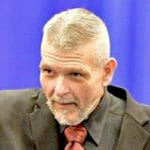You have seen it on the front page of the daily newspaper and in your social media feeds and probably heard about it on the radio. The American Rescue Plan was a historic $1.9 trillion dollar spending bill aimed at helping our nation recover from the pandemic. Most news outlets, however, focused on the individual benefits, such as stimulus checks and payments to families. Yet buried within the bill was an important opportunity for not-for-profit senior living providers.
A key provision in the legislation provided funding to counties, cities, municipalities and other non-entitlement units of government. The Department of the Treasury was directed to distribute $350 billion in “Coronavirus State and Local Fiscal Recovery Funds.” Those dollars are designed to flow from the federal government, through the states, down to local communities.
Each locality was alotted funds based on several factors, with smaller areas getting several hundred thousand dollars on average, up to millions in the larger suburbs and cities. The federal and state governments, however, are not part of the equation in deciding how the money is spent. That decision is being left up to the local municipalities and their officials.
According to the issued guidance, the funds must be spent in support of one of four areas:
- Support urgent COVID-19 response efforts to continue to decrease spread of the virus and bring the pandemic under control;
- Replace lost revenue for eligible state, local, territorial and Tribal governments to strengthen support for vital public services and help retain jobs;
- Support immediate economic stabilization for households and businesses; or
- Address systemic public health and economic challenges that have contributed to the unequal effect of the pandemic.
A close reading of the above, coupled with the interim final rule, allows for local governmental authorities to provide those funds to not-for-profit aging services providers for specific projects, such as telecommunications improvements, HVAC upgrades, infection prevention and control measures, and more. The trick is that providers have to apply and make the case at the local level. There is not a state or national clearinghouse for these funds, nor is there a uniform application process. All the decisions are truly being made locally.
Providers should see this as an opportunity, not only to attempt to gain funding, but also to improve relationships with their local municipal authorities. By engaging with officials, communities can discuss the challenges they have faced and find ways to work together to recover from what was clearly a very challenging year for anyone working in a healthcare setting. The possibility of this additional funding provides an excellent place to start.
If you haven’t taken the time to explore how your organization could benefit from the American Rescue Plan, the time is now. The first tranche of funding was received by most local municipalities in June 2021, with the second disbursement set to occur in June 2022.
The time is now. The money is out there. It is up to your organization to take the initiative!
David L. Anthony is a municipal consultant with LW Consulting Inc., a healthcare consulting firm providing services across the continuum. With more than three decades of local government experience, he now assists senior living and aging services providers in improving their relationships with their municipal partners, including guiding organizations on how to access funds through the American Rescue Plan.
The opinions expressed in each McKnight’s Senior Living marketplace column are those of the author and are not necessarily those of McKnight’s Senior Living.




